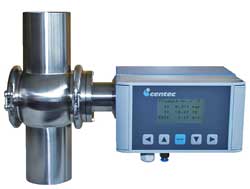TasunkaWitko
Well-Known Member
I thought this might be a "dumb question," but perhaps not....
I bottled my first brew, a chocolate maple porter, this last Sunday; since then, I've been keeping the bottles in a dark area where the ambient temperature is 68 to 72 degrees, which as far as I can tell from reading seems like an optimum temperature range.
I took a peek this morning, and it dawned on me that I really don't know any obvious signs that the beer is carbonating, other than perhaps shaking it up and potentially watching the cap blow off. There was some sediment on the bottom of the few random bottles I checked, and it seemed at first that this would be the most telling sign of carbonation - but what if that sediment is simply from the fermenter and got sucked up in the transfer from fermenter to pot, then to the bottle?
I'll wait the proscribed two weeks (perhaps three) before opening any bottles and finding out for sure, but in the meantime, I was wondering if there are any reliable, observable signs that I could be advised of.
Thanks in advance -
Ron
I bottled my first brew, a chocolate maple porter, this last Sunday; since then, I've been keeping the bottles in a dark area where the ambient temperature is 68 to 72 degrees, which as far as I can tell from reading seems like an optimum temperature range.
I took a peek this morning, and it dawned on me that I really don't know any obvious signs that the beer is carbonating, other than perhaps shaking it up and potentially watching the cap blow off. There was some sediment on the bottom of the few random bottles I checked, and it seemed at first that this would be the most telling sign of carbonation - but what if that sediment is simply from the fermenter and got sucked up in the transfer from fermenter to pot, then to the bottle?
I'll wait the proscribed two weeks (perhaps three) before opening any bottles and finding out for sure, but in the meantime, I was wondering if there are any reliable, observable signs that I could be advised of.
Thanks in advance -
Ron







































![Craft A Brew - Safale S-04 Dry Yeast - Fermentis - English Ale Dry Yeast - For English and American Ales and Hard Apple Ciders - Ingredients for Home Brewing - Beer Making Supplies - [1 Pack]](https://m.media-amazon.com/images/I/41fVGNh6JfL._SL500_.jpg)



















